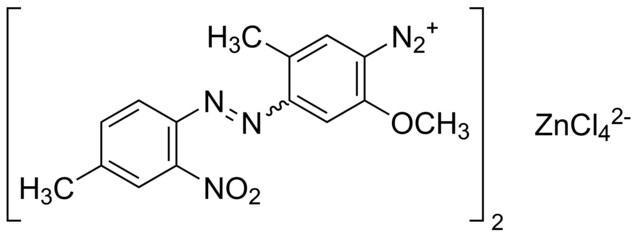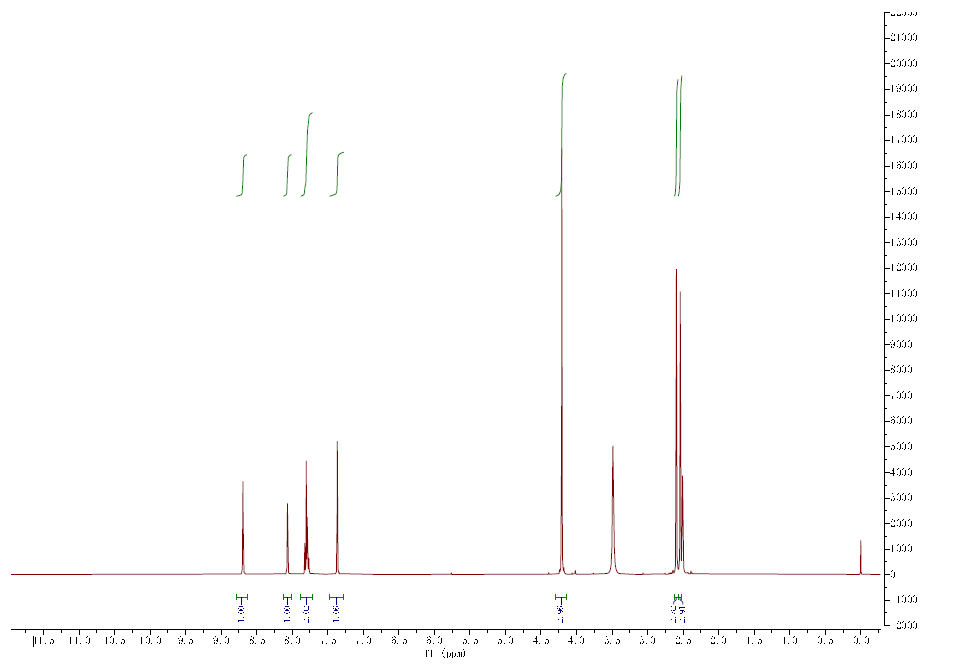FAST CORINTH V ZINC CHLORIDE DOUBLE SALT CAS#: 61966-14-1; ChemWhat Code: 931929
Identification
| Patent Information |
| No data available |
Physical Data
| Appearance | Dark red to dark brown powder |
| Solubility | No data available |
| Flash Point | No data available |
| Refractive index | No data available |
| Sensitivity | No data available |
Spectra
Route of Synthesis (ROS)
| Conditions | Yield |
| With sodium azide In water at 20℃; for 24h; | 99% |
Safety and Hazards
| Pictogram(s) |   |
| Signal | Danger |
| GHS Hazard Statements | H302 (100%): Harmful if swallowed [Warning Acute toxicity, oral] H312 (100%): Harmful in contact with skin [Warning Acute toxicity, dermal] H332 (100%): Harmful if inhaled [Warning Acute toxicity, inhalation] H350 (100%): May cause cancer [Danger Carcinogenicity] Information may vary between notifications depending on impurities, additives, and other factors. |
| Precautionary Statement Codes | P203, P261, P264, P270, P271, P280, P301+P317, P302+P352, P304+P340, P317, P318, P321, P330, P362+P364, P405, and P501 (The corresponding statement to each P-code can be found at the GHS Classification page.) |
| SDS Download | English Version |
Other Data
| Transportation | NONH for all modes of transport |
| Under the room temperature and away from light | |
| HS Code | No data available |
| Storage | Store at 2-8° for long time. |
| Shelf Life | 2 years |
| Market Price | USD |
| Druglikeness | |
| Lipinski rules component | |
| Molecular Weight | 415.909 |
| HBA | 4 |
| HBD | 0 |
| Matching Lipinski Rules | 2 |
| Veber rules component | |
| Polar Surface Area (PSA) | 107.92 |
| Rotatable Bond (RotB) | 4 |
| Matching Veber Rules | 2 |
| Use Pattern |
| Used as the intermediates. |
| It is primarily a dye, specifically a cationic dye in the form of a double salt with zinc chloride. Its chemical properties give it several common uses: |
| Paper dyeing: It is widely used in the coloring of paper and paper products due to its good adhesion to pulp and its bright coloring effect. |
| Textile dyeing: It can be used to dye certain fibers (especially synthetic fibers such as acrylic) to provide bright colors. |
| Ink: It is suitable for coloring in printing inks, especially in applications where bright colors are required. |
| Biological staining: Histological and microbiological staining: It is used for staining specific biological samples, such as microscopic observation of tissue sections, to highlight cell structures and microorganisms. |
| Coatings and plastics: It is used to color coatings, plastics and other polymers to give products the desired color and visual effects. |
Buy Reagent | |
| No reagent supplier? | Send quick inquiry to ChemWhat |
| Want to be listed here as a reagent supplier? (Paid service) | Click here to contact ChemWhat |
Approved Manufacturers | |
| Want to be listed as an approved manufacturer (Requires approvement)? | Please download and fill out this form and send back to approved-manufacturers@chemwhat.com |
Other Suppliers | |
| Watson International Limited | Visit Watson Official Website |
Contact Us for Other Help | |
| Contact us for other information or services | Click here to contact ChemWhat |




